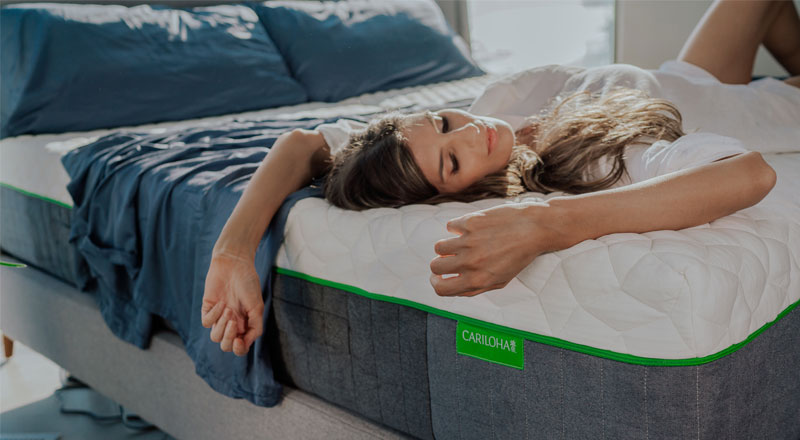Work, family, schedules and life in general are typical stressors and can cause too much stress and anxiety if left unchecked. And, at the end of your day, these stressors can keep you awake for hours with rolling slideshows in your head of all your problems and to-do lists. Sounds exhausting, right?
If this sounds familiar to you, you’re not alone. Studies show 1 in 3 adults struggle falling asleep and there are a number of factors that could be contributing to this struggle. And, the good news is that they can be resolved.
Before we dive into techniques to help you fall asleep, let’s identify the main reasons why you’re not falling asleep.
Stress or Anxiety
When you experience excessive stress or anxiety during the day, it can lead to racing thoughts at night, leaving you tossing and turning, preventing much-needed sleep.
Overstimulation
Overstimulating your mind might sound like something that will make you tired, but if you do it incorrectly, like scrolling through your phone, you end up not falling asleep. Blue light from your phone or too much screen time messes with your body’s natural cues for sleep.
Discomfort
You’ve tried every sleep position imaginable to get comfortable, but you just don’t feel right. Being and feeling comfortable when trying to fall asleep is more important than you might think.
It’s a combination of body position and temperature. Sleeping too warm can interrupt your REM sleep causing you to wake in the middle of the night.
Now that you know some reasons why you might be struggling to get to sleep, let’s pinpoint some techniques to help your body and mind fall fast asleep.
Reading
Enjoying a calming book or magazine can take your mind away from your reality and focus it on things way less stressful, letting it ease naturally into sleep. Reading can also cause eye fatigue, a common condition of the muscles surrounding the eyes when in intense use.
Bedtime is a great time to read an actual book, one you have to turn a page, and not pick up another device.
Soothing Environment
Where you sleep is just as important as when you sleep. You’ll want to create a space that gives you a calming, comforting sensation, like your own private sanctuary.
Ways to do this could be integrating calming colors into your bedding or bedroom walls. Also, investing in a mattress, sheets, pillow and comforter that regulate temperature, feel soft and soothing against your skin, and are allergy resistant.
Cariloha has your bedding needs covered. The array of bedding colors work together cohesively and always give you cool, calming comfort. Their bedding fabrics are made from bamboo viscose, a sustainably made, lightweight fabric that’s naturally cooling and will have you floating away on a cloud of softness and comfort night after night.
No Screens
You’ve heard it time and time again, blue-light emitted from screens can be detrimental to your sleep. When you can’t sleep, the answer is not scrolling through your phone, as it will only stimulate your mind even more.
Try taking screen temptation out of your room all together by turning all screens off an hour before you want to go to sleep, giving your mind ample time to calm down.
Comfy Clothing
Throwing on an old T-shirt and shorts or sweats might not actually be contributing to your being able to fall asleep.
What you wear to sleep matters. Wearing something like pajamas made from bamboo that are naturally temperature regulating and hypoallergenic can make all the difference. They’re soft to the touch and naturally moisture wicking, too, keeping you comfortable all year round.
Journaling
If you’re tossing and turning and sleep just isn’t coming, try getting out of bed and writing down all the thoughts that are rushing through your mind. Sometimes our thoughts and stresses need an outlet to let them go and to put your mind at rest.
Stretching
Stretching out and loosening up your muscles can be a great way to get your body to relax. When you’re under a lot of pressure, you tend to carry tension and stress in your muscles, making it harder to fall asleep.
If you’re restless, try getting up and taking a few deep breaths and doing a few leg, hip, and back stretches. You could even make this part of a nightly routine as a way to signal your body that it’s time for sleep.
What are some things you do to help you get to sleep? Let us know in the comments.

